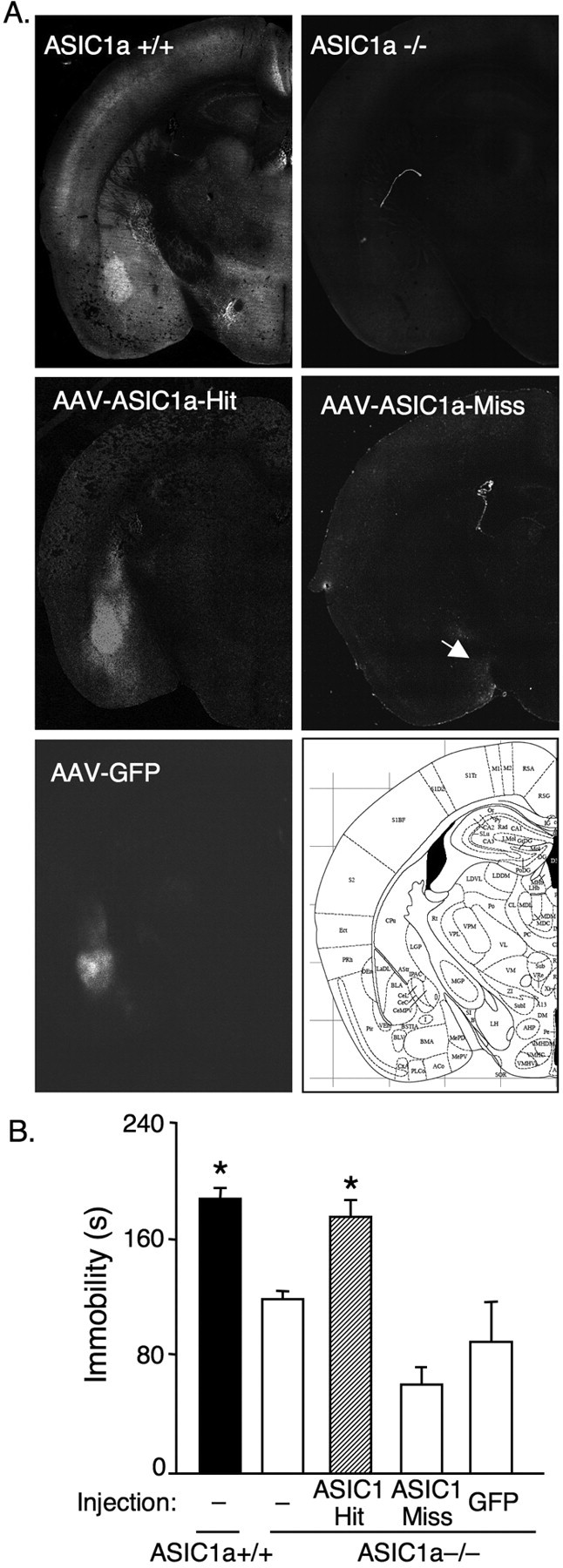Figure 6.

Restoring ASIC1a expression to the basolateral amygdala of ASIC1a−/− mice normalizes depression-related behavior. A, AAV-mediated gene expression. ASIC1 immunofluorescent labeling in an uninjected ASIC1a+/+ mouse, an uninjected ASIC1a−/− mouse, and an ASIC1a−/− mouse injected with AAV-ASIC1a in the basolateral amygdala (AAV-ASIC1a-Hit) and one that missed the basolateral amygdala (AAV-ASIC1a-Miss; arrow indicates viral transduction in the extreme edge of the medial amygdaloid nucleus). Also shown is an ASIC1a−/− mouse with AAV-GFP injected into the BLA. B, Targeting ASIC1a expression to the amygdala of ASIC1a−/− mice with AAV-ASIC1a significantly increased immobility in the forced swim test [uninjected ASIC1a+/+ (n = 11), uninjected ASIC1a−/− (n = 9), AAV-ASIC1a-Hit (n = 7), AAV-ASIC1a-Miss (n = 6), AAV-GFP (n = 6)]. One-way ANOVA revealed a significant effect of group (p < 0.001, F (4,34) = 19.3). Planned contrast testing found that restoring ASIC1a expression to the BLA increased immobility in ASIC1a−/− mice relative to the other ASIC1−/− groups (*p < 0.001), and to levels not significantly different from ASIC1a+/+ mice (p = 0.464). As observed in the earlier experiments, the ASIC1a+/+ mice had significantly increased immobility relative to uninjected ASIC1a−/− mice (*p < 0.001).
